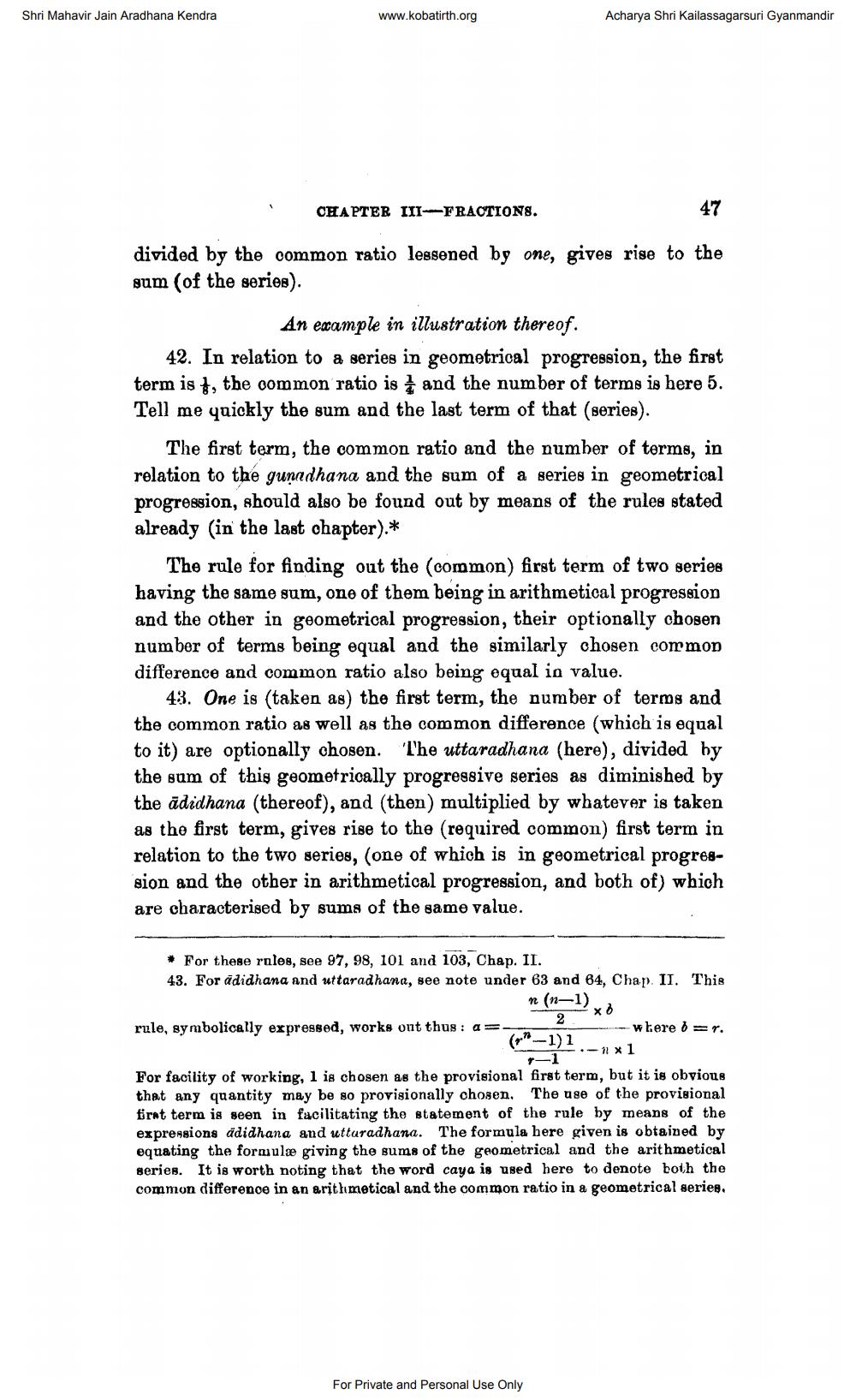________________
Shri Mahavir Jain Aradhana Kendra
www.kobatirth.org
Acharya Shri Kailassagarsuri Gyanmandir
CHAPTER III-FRACTIONS.
47
divided by the common ratio lessened by one, gives rise to the sum (of the series).
An example in illustration thereof. 42. In relation to a series in geometrical progression, the first term is , the common ratio is and the number of terms is here 5. Tell me quickly the sum and the last term of that (series).
The first term, the common ratio and the number of terms, in relation to the gunadhana and the sum of a series in geometrical progression, should also be found out by means of the rules stated already (in the last chapter).*
The rule for finding out the common) first term of two series having the same sum, one of them being in arithmetical progression and the other in geometrical progression, their optionally chosen number of terms being equal and the similarly chosen common difference and common ratio also being equal in value.
43. One is taken as the first term, the number of terms and the common ratio as well as the common difference (which is equal to it) are optionally chosen. The uttaradhana (here), divided by the sum of this geometrically progressive series as diminished by the ādidhana (thereof), and (then) multiplied by whatever is taken as the first term, gives rise to the (required common) first term in relation to the two series, (one of which is in geometrical progression and the other in arithmetical progression, and both of) which are characterised by sums of the same value.
For these rules, see 97, 98, 101 and 103, Chap. II. 43. For adidhana and uttaradhana, see note under 63 and 64, Chap. II. This
m (n-1)
o
rule, symbolically expressed, works out thus: a=
2
-
--- Where 0 =r.
(P-1)1.-hx1
For facility of working, 1 is chosen as the provisional first term, but it is obvious that any quantity may be so provisionally chosen. The use of the provisional first term is seen in facilitating the statement of the rule by means of the expressions adidhana and utturadhana. The formula bere given is obtained by equating the formulæ giving the sums of the geometrical and the arithmetical series. It is worth noting that the word caya is used here to denote both the common difference in an arithmetical and the common ratio in a geometrical series.
For Private and Personal Use Only




